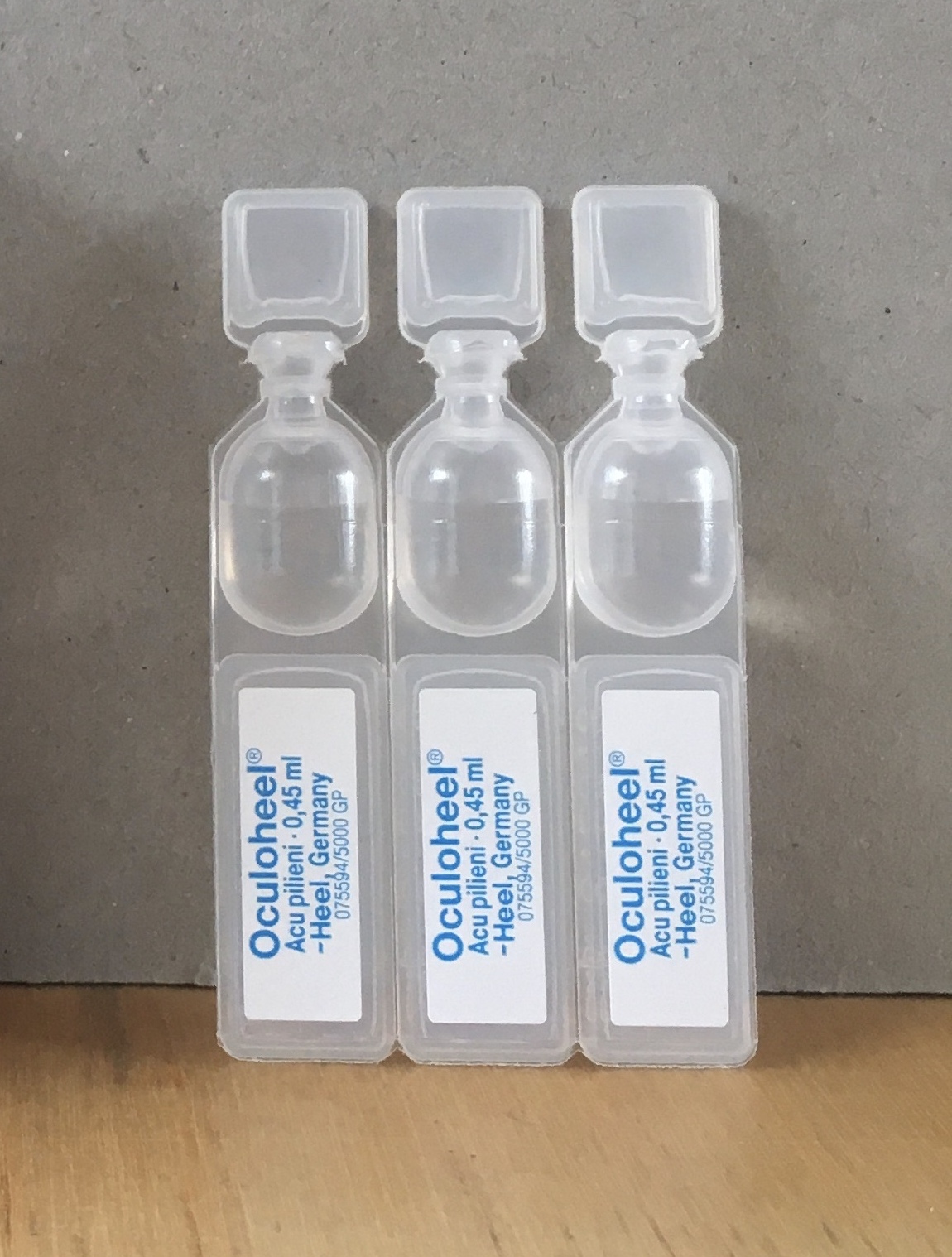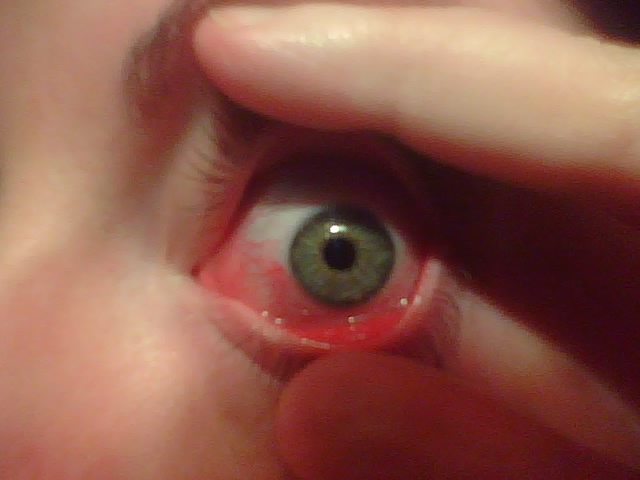|
Epinastine
Epinastine (brand names Alesion, Elestat, Purivist, Relestat) is a second-generation antihistamine and mast cell stabilizer that is used in eye drops to treat allergic conjunctivitis. It is produced by Allergan and marketed by Inspire in the United States. It is highly selective for the H1 receptor and does not cross the blood-brain-barrier. It was patented in 1980 and came into medical use in 1994. References External links Official U.S. website of Elestat Azepanes H1 receptor antagonists Guanidines AbbVie brands Mast cell stabilizers Peripherally selective drugs {{respiratory-system-drug-stub ... [...More Info...] [...Related Items...] OR: [Wikipedia] [Google] [Baidu] |
Eye Drops
Eye drops or eyedrops are liquid drops applied directly to the surface of the eye usually in small amounts such as a single drop or a few drops. Eye drops usually contain saline to match the salinity of the eye. Drops containing only saline and sometimes a lubricant are often used as artificial tears to treat dry eyes or simple eye irritation such as itching or redness. Eye drops may also contain one or more medications to treat a wide variety of eye diseases. Depending on the condition being treated, they may contain steroids, antihistamines, sympathomimetics, beta receptor blockers, parasympathomimetics, parasympatholytics, prostaglandins, nonsteroidal anti-inflammatory drugs (NSAIDs), antibiotics, antifungals, or topical anesthetics. Eye drops have less of a risk of side effects than do oral medicines, and such risk can be minimized by occluding the lacrimal punctum (i.e. pressing on the inner corner of the eye) for a short while after instilling drops. Prior to the ... [...More Info...] [...Related Items...] OR: [Wikipedia] [Google] [Baidu] |
Antihistamine
Antihistamines are drugs which treat allergic rhinitis, common cold, influenza, and other allergies. Typically, people take antihistamines as an inexpensive, generic (not patented) drug that can be bought without a prescription and provides relief from nasal congestion, sneezing, or hives caused by pollen, dust mites, or animal allergy with few side effects. Antihistamines are usually for short-term treatment. Chronic allergies increase the risk of health problems which antihistamines might not treat, including asthma, sinusitis, and lower respiratory tract infection. Consultation of a medical professional is recommended for those who intend to take antihistamines for longer-term use. Although people typically use the word "antihistamine" to describe drugs for treating allergies, doctors and scientists use the term to describe a class of drug that opposes the activity of histamine receptors in the body. In this sense of the word, antihistamines are subclassified acco ... [...More Info...] [...Related Items...] OR: [Wikipedia] [Google] [Baidu] |
Mast Cell Stabilizer
Mast cell stabilizers are medications used to prevent or control certain allergic disorders. They block mast cell degranulation, stabilizing the cell and thereby preventing the release of histamine and related mediators. One suspected pharmacodynamic mechanism is the blocking of IgE-regulated calcium channels. Without intracellular calcium, the histamine vesicles cannot fuse to the cell membrane and degranulate. As inhalers they are used to treat asthma, as nasal sprays to treat hay fever (allergic rhinitis) and as eye drops for allergic conjunctivitis. Finally, in oral form, they are used to treat the rare condition of mastocytosis. Examples Mast cell stabilizer medications include: * β2-adrenergic agonists * Cromoglicic acid * Ketotifen * Loratadine * Desloratadine * Methylxanthines * Olopatadine * Rupatadine * Mepolizumab * Omalizumab * Pemirolast * Quercetin * Nedocromil * Azelastine * Tranilast * Palmitoylethanolamide * Vitamin D Vitamin D is a gro ... [...More Info...] [...Related Items...] OR: [Wikipedia] [Google] [Baidu] |
Eye Drop
Eye drops or eyedrops are liquid drops applied directly to the surface of the eye usually in small amounts such as a single drop or a few drops. Eye drops usually contain saline to match the salinity of the eye. Drops containing only saline and sometimes a lubricant are often used as artificial tears to treat dry eyes or simple eye irritation such as itching or redness. Eye drops may also contain one or more medications to treat a wide variety of eye diseases. Depending on the condition being treated, they may contain steroids, antihistamines, sympathomimetics, beta receptor blockers, parasympathomimetics, parasympatholytics, prostaglandins, nonsteroidal anti-inflammatory drugs (NSAIDs), antibiotics, antifungals, or topical anesthetics. Eye drops have less of a risk of side effects than do oral medicines, and such risk can be minimized by occluding the lacrimal punctum (i.e. pressing on the inner corner of the eye) for a short while after instilling drops. Prior to the ... [...More Info...] [...Related Items...] OR: [Wikipedia] [Google] [Baidu] |
Allergic Conjunctivitis
Allergic conjunctivitis (AC) is inflammation of the conjunctiva (the membrane covering the white part of the eye) due to allergy. Although allergens differ among patients, the most common cause is hay fever. Symptoms consist of redness (mainly due to vasodilation of the peripheral small blood vessels), edema (swelling) of the conjunctiva, itching, and increased lacrimation (production of tears). If this is combined with rhinitis, the condition is termed allergic rhinoconjunctivitis (ARC). The symptoms are due to release of histamine and other active substances by mast cells, which stimulate dilation of blood vessels, irritate nerve endings, and increase secretion of tears. Treatment of allergic conjunctivitis is by avoiding the allergen (''e.g.'', avoiding grass in bloom during "hay fever season") and treatment with antihistamines, either topical (in the form of eye drops), or systemic (in the form of tablets). Antihistamines, medications that stabilize mast cells, and nonsteroid ... [...More Info...] [...Related Items...] OR: [Wikipedia] [Google] [Baidu] |
Allergan
Allergan plc is an American, Irish-domiciled pharmaceutical company that acquires, develops, manufactures and markets brand name drugs and medical devices in the areas of medical aesthetics, eye care, central nervous system, and gastroenterology. The company is the maker of Botox. Allergan plc was formed in March 2015 when Irish–registered Actavis plc acquired U.S.–registered Allergan, Inc., and assumed the Allergan name. In 2016, Allergan sold its generic business, Actavis, to Teva Pharmaceuticals for $40.5 billion. In June 2019, U.S. pharmaceutical company AbbVie announced it had reached an agreement to acquire Allergan for $63 billion. The merged company would be domiciled in the U.S. for tax purposes. History Allergan plc was created from the 2015 merger and Irish corporate tax inversion of two companies, Irish-based Actavis plc and U.S.-based Allergan, Inc. Allergan, Inc. In 1948, pharmacist Gavin S. Herbert founded Allergan Pharmaceuticals, Inc. In 1970, ... [...More Info...] [...Related Items...] OR: [Wikipedia] [Google] [Baidu] |
Inspire (company)
Inspire is an Arlington, Virginia-based healthcare social network. It builds and manages online health communities for patients and caregivers, and connects patients to life science companies for the purpose of research. Overview Founded in 2005, the company serves millions of patients and caregivers in several hundred online support groups. As of the end of 2020, Inspire had more than two million registered members. Brian Loew: Inspiring Patient Connections 1 August 2016 These online groups are mostly organized around a single condition, such as psoriasis, ovarian cancer, or lung cancer. like Inspire are referenced ... [...More Info...] [...Related Items...] OR: [Wikipedia] [Google] [Baidu] |
Binding Selectivity
Binding selectivity is defined with respect to the binding of ligands to a substrate forming a complex. Binding selectivity describes how a ligand may bind more preferentially to one receptor than another. A selectivity coefficient is the equilibrium constant for the reaction of displacement by one ligand of another ligand in a complex with the substrate. Binding selectivity is of major importance in biochemistry and in chemical separation processes. Selectivity coefficient The concept of selectivity is used to quantify the extent to which one chemical substance, A, binds each of two other chemical substances, B and C. The simplest case is where the complexes formed have 1:1 stoichiometry. Then, the two interactions may be characterized by equilibrium constants ''K''AB and ''K''AC.The constant used here are ''association'' constants. ''Dissociation'' constants are used in some contexts. A dissociation constant is the reciprocal of an association constant. : + B AB; \mathit ... [...More Info...] [...Related Items...] OR: [Wikipedia] [Google] [Baidu] |
H1 Receptor
The H1 receptor is a histamine receptor belonging to the family of rhodopsin-like G-protein-coupled receptors. This receptor is activated by the biogenic amine histamine. It is expressed in smooth muscles, on vascular endothelial cells, in the heart, and in the central nervous system. The H1 receptor is linked to an intracellular G-protein (Gq) that activates phospholipase C and the inositol triphosphate (IP3) signalling pathway. Antihistamines, which act on this receptor, are used as anti-allergy drugs. The crystal structure of the receptor has been determined (shown on the right/below) and used to discover new histamine H1 receptor ligands in structure-based virtual screening studies. Function The expression of NF-κB, the transcription factor that regulates inflammatory processes, is promoted by the constitutive activity of the H1 receptor as well as by agonists that bind at the receptor. H1-antihistamines have been shown to attenuate NF-κB expression and mitigate certain ... [...More Info...] [...Related Items...] OR: [Wikipedia] [Google] [Baidu] |
H1 Receptor Antagonists
H1 antagonists, also called H1 blockers, are a class of medications that block the action of histamine at the H1 receptor, helping to relieve allergic reactions. Agents where the main therapeutic effect is mediated by negative modulation of histamine receptors are termed antihistamines; other agents may have antihistaminergic action but are not true antihistamines. In common use, the term "antihistamine" refers only to H1-antihistamines. Virtually all H1-antihistamines function as inverse agonists at the histamine H1-receptor, as opposed to neutral antagonists, as was previously believed. Medical uses H1-antihistamines are clinically used in the treatment of histamine-mediated allergic conditions. These indications may include:Rossi S (Ed.) (2004). ''Australian Medicines Handbook 2004''. Adelaide: Australian Medicines Handbook. * Allergic rhinitis * Allergic conjunctivitis * Allergic dermatological conditions ( contact dermatitis) * Rhinorrhea (runny nose) * Urticari ... [...More Info...] [...Related Items...] OR: [Wikipedia] [Google] [Baidu] |




